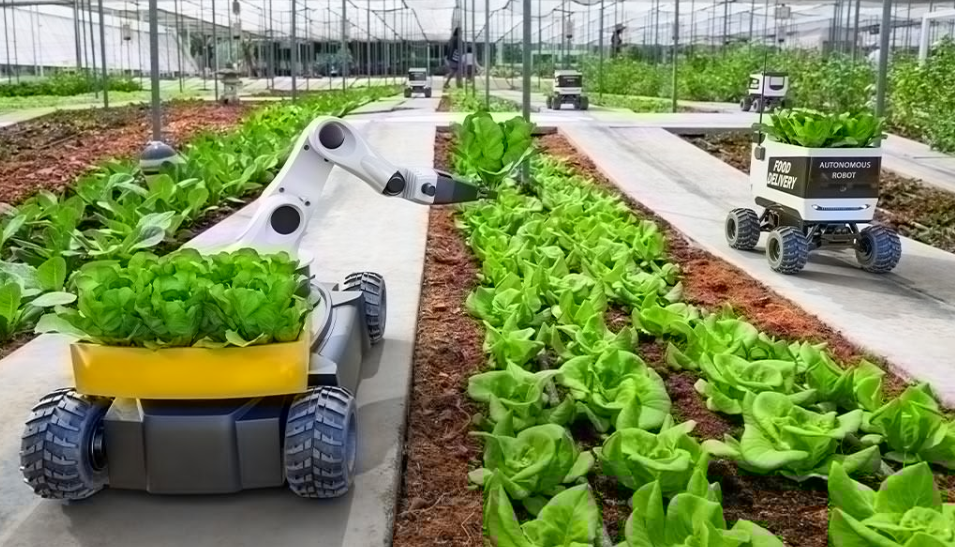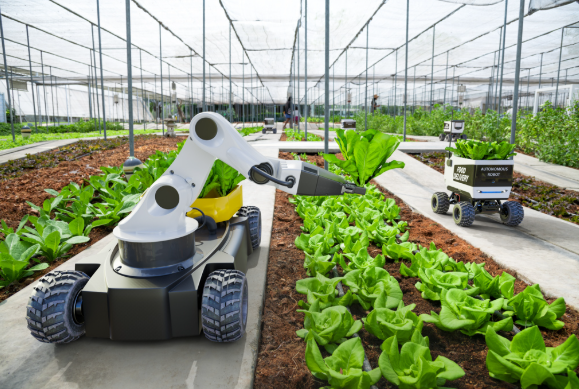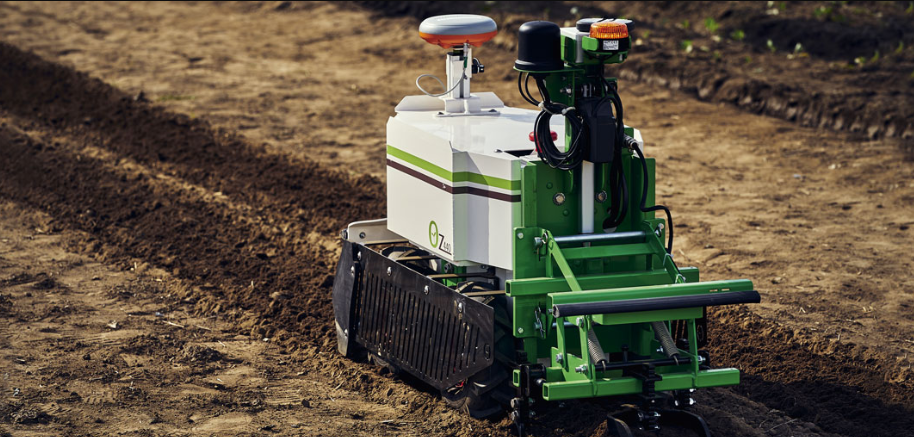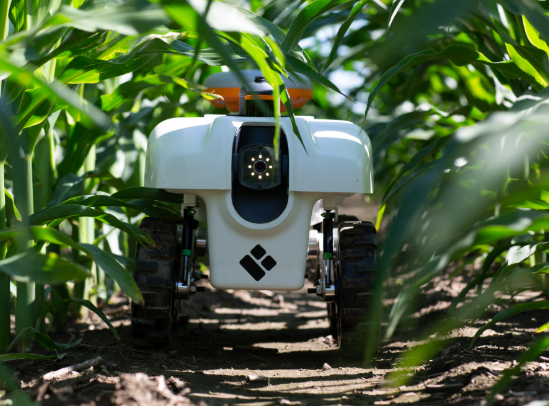
Imagine fields tended by autonomous machines that never tire, drones that diagnose crop health from the sky, and robotic arms that harvest produce with surgical precision. This isn't science fiction - Agricultural Robots are already transforming farms worldwide, using artificial intelligence to tackle labor shortages, climate challenges, and the urgent demand for sustainable food production. As global populations grow and arable land shrinks, these AI-powered systems are becoming agriculture's indispensable partners, merging cutting-edge technology with ancient wisdom to cultivate our future food security.
What Exactly Defines an Agricultural Robot?
An Agricultural Robot is an autonomous or semi-autonomous machine designed to perform farming tasks with minimal human intervention, leveraging technologies like computer vision, AI algorithms, and precision mechanics. Unlike traditional farm equipment, these intelligent systems can perceive their environment, make data-driven decisions, and adapt to changing conditions in real-time.
These machines represent a quantum leap beyond mechanization, evolving from simple tools to cognitive collaborators that monitor soil conditions, identify individual weeds, or harvest only ripe produce through advanced sensing capabilities.
The Neural Network Behind the Plow: How AI Powers Farm Robots
Machine Vision: The Robotic Farmer's Eyes
Advanced multispectral cameras enable robots to see beyond the visible spectrum, detecting plant stress before human eyes can notice yellowing leaves. Companies like Blue River Technology deploy this technology to analyze 5,000 plants per minute, making real-time herbicide decisions that reduce chemical usage by up to 90% compared to conventional spraying methods.
Edge Computing in the Fields
Since rural farms often have poor connectivity, Agricultural Robots process massive datasets locally through onboard computers. John Deere's See & Spray Ultimate system exemplifies this approach, using 36 onboard neural networks to make 23 herbicide application decisions every second while operating without internet access.
Collaborative Robotics
The latest generation of farming robots work alongside humans, exemplified by Harvest CROO Robotics' strawberry harvester that allows human pickers to comfortably ride while the machine handles the back-breaking work of identifying, picking, and packing berries.
Four Game-Changing Categories of Agricultural Robots
Precision Weeding Warriors
Tertill's solar-powered robot patrols gardens 24/7, differentiating between crops and weeds using height sensors. FarmWise' Titan FT-35 robot eliminates over 95% of herbicide use by zapping individual weeds with microdoses of electricity.
Selective Harvest Specialists
Advanced robotic harvesters like Tevel's flying fruit-pickers use AI vision and gentle suction arms to harvest only ripe fruit. Trials show these robots reduce orchard harvesting costs by 50% while eliminating the 30% crop waste common with human pickers racing against spoilage timelines.
Autonomous Crop Scouting
Small Robot Company's "Tom" robot autonomously patrols fields while "Wilma" AI analyzes crop conditions. This replaces random sampling with plant-by-plant diagnostics, detecting early-stage disease with 97% accuracy according to 2024 University of Cambridge trials.
Robotic Dairy Attendants
Lely's Astronaut A5 milking robots don't just automate milking - they collect 120 data points per cow daily including milk composition, temperature, and behavioral patterns. This transforms dairies into AI-powered health monitoring systems.
While Agricultural Robots represent the future of food production, robotic innovations have been transforming other fields for decades. Discover the fascinating origins of medical robotics:
When Were Medical Robots First Used? The Untold Origin Story Rewriting Modern MedicineBeyond Efficiency: The Unexpected Benefits of Farming Robots
Beyond boosting productivity, Agricultural Robots solve critical human challenges. They fundamentally transform farming economics by addressing the 28% decline in agricultural labor reported by the USDA since 2002 while cutting operating costs by up to 40% according to OECD studies.
Ecologically, these robots enable regenerative practices at scale through continuous soil monitoring and cover crop maintenance, with robotic vineyard managers demonstrating 45% reduction in water usage and synthetic fertilizer application.
Moreover, they empower small-scale farmers through Robotics-as-a-Service (RaaS) models. Companies like Monarch Tractor offer electric, driver-optional tractors for $15/hour without upfront investment, democratizing technology once available only to industrial farms.
Navigating the Growing Pains: Key Challenges Remain
Despite their potential, Agricultural Robots face significant hurdles:
Technical Limitations in Unstructured Environments
Navigating muddy, steep, or densely planted fields remains difficult for ground robots, with MIT studies showing a 37% decrease in navigation efficiency when transitioning from flat test fields to actual farms. Sensor performance similarly degrades during heavy rain or dust storms that frequently occur during critical farming windows.
Economic Accessibility Concerns
With high-end systems costing over $500,000, adoption skews toward large agribusiness. However, startups like Burro are disrupting this with $7/day collaborative robots designed for specialty crop farms, featuring simple autonomy for transporting produce without complex manipulation capabilities.
The Future Farm: What's Next for Agricultural Robots?
The next wave includes swarm robotics inspired by insect colonies, where simple individual robots collaborate on complex tasks like planting cover crops during cash crop growth cycles. Early trials using swarms of mini-burrowing robots reduced soil compaction by 28% while maintaining crop rotation.
Meanwhile, neuromorphic computing chips modeled after biological brains promise to make robots 100 times more energy efficient. Applied to farms, this could enable perpetual solar-powered robots that operate 24/7 without human oversight.
Integrating generative AI will allow robots to provide farmers with natural-language crop advice, moving from task executors to agronomic advisors. These systems could predict harvest yields with 99% accuracy by 2030 according to industry forecasts.
Frequently Asked Questions About Agricultural Robots
How much do Agricultural Robots cost today?
Current systems range from $7/day collaborative carts to $500,000+ autonomous harvesting units. The trend toward Robotics-as-a-Service (RaaS) eliminates large upfront investments, with farmers paying $35/hour on average for advanced capabilities according to 2024 AgTech Journal data.
Can Agricultural Robots completely replace human farmworkers?
No - current robots primarily augment human labor. In strawberry harvesting, advanced robots like those from Octinion reduce the need for back-breaking labor but still require humans for quality control and equipment oversight. The USDA projects agricultural robotics will create 85,000 new high-tech farming jobs by 2028.
What crops are most suitable for robotic farming?
Specialty crops requiring intensive labor see the most immediate impact. Robotics now successfully handle 30% of global strawberry harvesting, 45% of apple orchards, and nearly 60% of vineyard operations. Grains and row crops follow closely with autonomous planting and spraying systems achieving over 90% adoption in large US corn operations.
Are Agricultural Robots environmentally friendly?
When designed sustainably, they offer significant ecological benefits. Electric field robots like those from Monarch Tractor reduce diesel emissions by 100% while their precision application of inputs dramatically cuts excess chemical usage - California trials show a 93% reduction in pesticide runoff in robotic vineyards.





